#american culinary history
Text
Obesity: The Science, Culture, and Politics of Fatness in America
In Fall 2023, students enrolled in Dr. Margot Finn's course on the science, culture, and politics of obesity worked in groups to research and write captions for food history materials.
Most of these items were from the Special Collections Research Center's Janice Bluestein Longone Culinary Archive.
These were featured on the Shapiro Library Screens in Bert's Study Lounge.
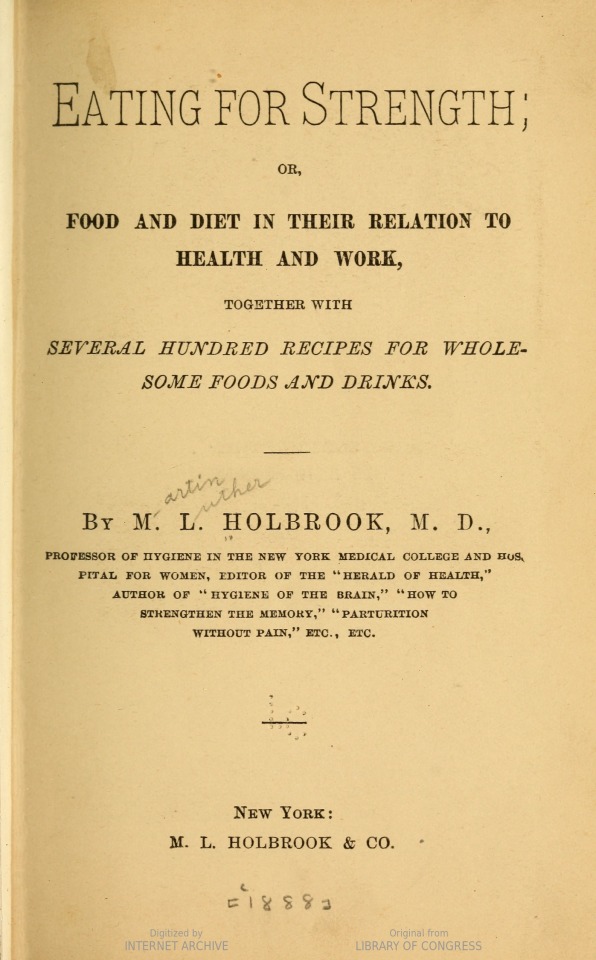
M. L. Holbrook, Eating for Strength (New York, M. L. Holbrook & co. [c1888]). Library of Congress.
The 1888 edition of Eating for Strength, a popular 19th century work on diet written by Martin Luther Holbrook approaches food in a scientific manner, outlining the dietary needs of various classes of people and looking at the healthfulness of various foods. This book includes information about food and diet in relation to health and work, together with several hundred recipes for different foods and drinks. All of these tables illustrate the protein, carbohydrate, and fat content of some of the most common foods that characterized the diets of that era. This underscores how even over 100 years ago, these three macronutrients were seen as important to monitor in order to curb obesity.
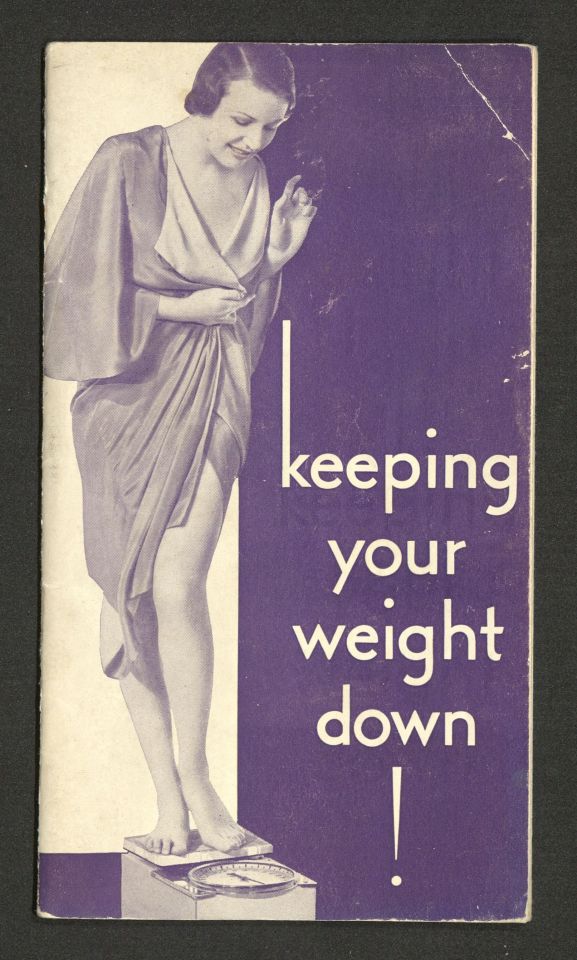
Keeping Your Weight Down (Westfield, N.Y. : Welch Grape Juice Co., [1921?]). Janie Bluestein Longone Culinary Archive.
Published by Welch Juice Company in 1921, this recipe book called Keeping Your Weight Down suggests that Welch's Grape Juice can aid in weight maintenance, and emphasizes its importance in influencing desired health benefits with their beverage. The
monochrome-purple book cover showcases an idealized “thin” model covered in loose night clothing, examining a weight scale. Inside, “Pudding and Desserts” recipes are listed in sections with the usage of Welch brand ingredients. Framing grapes as dessert, often eliminated in dieting practices, allows for the luxury of sweets within the strictures of losing weight.

Ruth West, Stop Dieting! Start Losing! (New York : E.P. Dutton & Company, Inc., 1956.). Janice Bluestein Longone Culinary Archive.
Although Ruth West’s Stop Dieting! Start Losing! was a dieting recipe book published in 1956, the artifact has a startling resemblance to modern attitudes about weight, despite the huge body of research conducted on obesity since this time. Today, It’s easy to laugh at slogans like “how to lose 2 to 3 pounds a week” and “16 foods for sex appeal and vitality,” but how different are these claims from those we hear today from diet magazines, social media and even our own medical professionals? Is the rigor of evidence from then to now all that different?
Read more!
#libraries#archives#special collections#special collections libraries#libraries and archives#american culinary history#archival collections#archival research#exhibits#student curators#students#food studies#food history#janice bluestein longone#jblca#janice bluestein longone culinary archive#obesity#diet#weight loss diet#culinary history#culinary#cookbooks#cooking#cookbook#recipe#cooking tips
14 notes
·
View notes
Text
OMG, @netflix is about to drop the second season of High on the Hog on 11/22/23 and I can't wait...
youtube

#high on the hog#black americans#black american#soul food#black american culture#netflix#african american#black pride#black community#black excellence#black culture#black girl magic#african america history#african american cuisine#African American Culture#black history#african american history#culinary history#tv series#tv shows#Youtube
71 notes
·
View notes
Text
"One time when he looked at me over his menu and asked me whether I would like something like a fresh mushroom omelet or one with wild asparagus, and I mumbled in my shy ignorance that I really did not care, he put down the big information sheet and for one of the few times in my life with him, he spoke a little sharply. He said, 'You should never say that again, dear girl. It is stupid, which you are not. It implies that the attentions of your host are basically wasted on you. So make up your mind, before you open your mouth. Let him believe, even if it is a lie, that you would infinitely prefer the exotic wild asparagus to the banal mushrooms, or vice versa. Let him feel that it matters to you ... and even that he does!'
'All this,' my uncle added gently, 'may someday teach you about the art of seduction, as well as the more important art of knowing yourself.' Then he turned to the waiter and ordered two wild asparagus omelets. I wanted for a minute, I still remember, to leave the dining car and weep a little in the sooty ladies' room, but instead I stayed there and suddenly felt more secure and much wiser - always a heady experience but especially so at nineteen. And I don't believe that since then I have ever said, 'I don't care,' when I am offered a choice of any kind of food and drink. As Uncle Evans pointed out to me, I either care or I'm a dolt, and dolts should not consort with caring people."
-'Uncle Evans' from Love in a Dish by M. F. K. Fisher
#mfk fisher#mary frances kennedy fisher#culinary writing#culinary history#culinary essay#american food writing#life learning
14 notes
·
View notes
Link
These restaurants are partaking in “a new and expanded telling” of the history of New Orleans cuisine, said Jessica B. Harris, whose books have been instrumental in tracing the food’s African roots. (Mr. Mbaye will appear in the next season of “High on the Hog,” the Netflix series based on Dr. Harris’s book of the same name.)
“This is a widening of the lens,” Dr. Harris said.
Filling the local void of African restaurants is why Prince Lobo’s family opened Addis NOLA in 2019. Last year, the Ethiopian restaurant moved to a new location in the Seventh Ward, along a stretch of Black-owned businesses that Mr. Lobo calls “a new Black Wall Street.” (Robert Manos, in the group picture at top, is a manager at the restaurant, in charge of customer experience.)
“All of the history that was left out over the last hundreds of years, we’re having to fill that in now with our storytelling,” said Mr. Lobo, 25.
No paywall. That is a gift link. Take a look
10 notes
·
View notes
Text
Significance of Daphne: From Nature to Culture
The Daphne plant, a member of the Thymelaeaceae family, is a testament to the remarkable resilience and adaptability of the natural world. Slender leaves and small flowers characterize its botanical composition. However, beyond its biological makeup, the Daphne plant has significantly contributed to various fields such as culture, medicine, and culinary traditions, leaving a distinct and lasting…

View On WordPress
#american#apollo#biology#botany#china#cuisine#culinary#culture#cupid#dish#foodx#graduation#greek#greek mythology#hanami#hawaii#history#italian#italy#japan#japanese#language#medicine#mediterranean#mesoamerican#moroccan#myth#myths#native american#natural
2 notes
·
View notes
Photo

I love coming across candies from my youth. Goldenberg's Peanut Chews date back to 1917. They were created by Romanian immigrant David Goldenberg who created the Goldenberg Candy Company in 1890 in the city of brotherly love: Philadelphia.
What I didn't know was that Peanut Chews were originally one big bar 🤯🤯🤯 and that they were given to the doughboys of WWI as a ration bar. The bar went on sale in 1921 and in 1930 it was sold as in bite size pieces as it still is today. If only it was still sold as one big bar 🤤🤤🤤
The Just Born company (makers of Mike and Ike) bought the Goldenberg Candy Company in 2003. They kept the operations in Philly, making those delicious chews in the same facility they've always been made in. "Now that's chewin' it old school."
#PeanutChews #GoldenbergsPeanutChews #GoldenbergCandyCompany #DavidGoldenberg #CandyHistory #ConfectionersHistory #FoodHistory #CulinaryHistory #AmericanHistory #USHistory #History #Historia #Histoire #Geschichte #HistorySisco
https://www.instagram.com/p/CnK9Cc5OoqL/?igshid=NGJjMDIxMWI=
#Peanut Chews#Goldenberg's Peanut Chews#Goldenberg Candy Company#David Goldenberg#Candy History#Confectioner's History#Food History#Culinary History#American History#U.S. History#History#Historia#Histoire#Geschichte#HistorySisco
4 notes
·
View notes
Text
Restaurateur Thomas Downing, the New York Oyster King
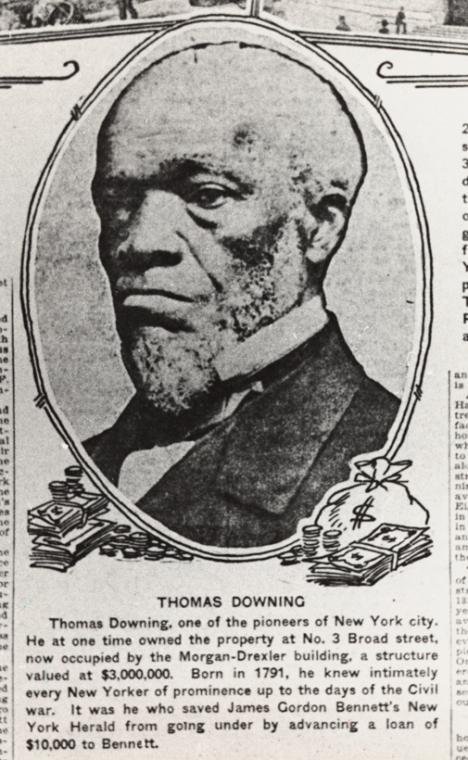
Thomas Downing (1791–1866) was an American restaurateur and abolitionist active in New York City during the Victorian era who was nicknamed the "New York Oyster King". He was one of the wealthiest people in New York City at the time of his death, though he spent his life being prohibited from acquiring U.S. citizenship until the Civil Rights Act of 1866 was passed, the day before he died.
Thomas Downing was born in Chesapeake Bay on Chincoteague Island, Virginia. His parents were enslaved, and eventually freed, by Sea Captain John Downing after learning that owning slaves was not condoned by the Methodist Church. They adopted the name "Downing" as their own and began working as paid caretakers of Captain Downing's Methodist Meeting House. Eventually, they bought some property on the Island and the family began earning extra money by gathering and selling oysters, as well as other seafood, such as clams and fish. Thomas was raised alongside his wealthy neighbors and shared the same tutor as their children. One of his tutors was Henry A. Wise, who went on to become the Governor of Virginia (1861–1865).

Thomas Downing grew up on Virginia’s Chincoteague Island, where his family made their living from the sea by fishing, clamming, and raking oysters. The skills Downing acquired during his childhood carried him to Philadelphia—he’d followed the troops North after the War of 1812—where he spent seven years running an oyster bar.
In the 1820s, most registered oystermen were African American, and opportunity in the industry was abundant, especially for people like Downing, who came from oyster-rich states along the Chesapeake Bay like Virginia. But the world’s oyster capital was New York City, and Downing moved there, spending his days on a schooner harvesting oysters from the beds of the city’s waters and selling them to restaurants or on the streets.

At the end of the War of 1812, Thomas joined the United States Army and followed it to Philadelphia. There he met and married his wife, freeborn Rebecca West, and they had five children: George, Thomas, Henry, Jane, and Peter. Thomas worked as a valet, continued oystering, and, wanting more out of life than oyster digging, he eventually opened his first oyster bar. This allowed him to keep ties with his family's roots while establishing his new career as an esteemed businessman. Thomas used his knowledge of oystering to his advantage and used his connections to the fisherman to sell the best oysters around.
Source: Wikipedia, Fishers Island Oyster Farm, Atlas Obscura
Visit www.attawellsummer.com/forthosebefore to learn more about Black history and read new blog posts first.
Need a freelance graphic designer or illustrator? Send me an email.
#Thomas Downing#New York Oyster King#seafood#New York’s Black Oyster King#New York history#Black history#history#Black culinary history#Chesapeake Bay#New York City#Virginia#Henry A. Wise#foodways#African American foodways#Rebecca West
0 notes
Text
How Black Culinary Historians Are Rewriting the History of American Food - YES! Magazine Solutions Journalism

Michael Twitty, Black culinary historian, in his garden in Rockville, Maryland, in 2013.
African American food culture is one of many aspects of African American identity that represents an unbroken line from Africa to present-day America.
Much of American cuisine is fusion food. Yes, even apple pie. European colonists brought apple trees, which originated in Asia, to these shores. And other foods came from other lands. Hamburger, pizza, and tacos, we know, came here from Germany, Italy, and Mexico, respectively.
Generally left out of the discussion of American cuisine, though, are the Indigenous foodways, which enabled early settlers to survive, as well as the influence of enslaved Africans that shaped our culinary heritage, particularly in the South. The latter is something Black food historians such as journalist Donna Battle Pierce, and James Beard Award-winners Michael Twitty and Adrian Miller, are helping to change.
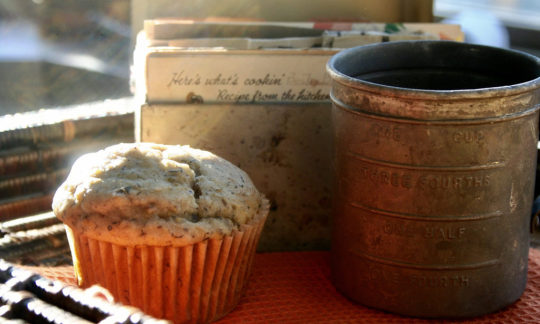
In his book, The Cooking Gene, Twitty explores these complexities, while sharing how his personal ancestry intertwines with American and African food traditions. He cites the research of historian Stephen D. Behrendt, who documents the relationship between those who were enslaved and the crops they planted grew and harvested that contributed to the wealth of the United States—crops that were mostly transported to the New World via the trans-Atlantic slave trade. Behrendt even suggests that enslaved Africans were trafficked here at intervals that corresponded to the seasonal growing season.
“This does not start with race and end with commodities, it starts with commodities and ends with race,” Twitty says, in a phone interview, referencing those cash crops such as rice, sugar, tobacco, and others. “These crops shaped the way that people [the enslaved and their owners] lived. They shaped the diet.”
Throughout the regions where enslaved Africans were concentrated, certain culinary “common denominators” emerged, Twitty writes in his book. These dishes formed the basis for Southern cuisine and “soul food,” an umbrella term used to describe Black people’s home cooking which, Pierce says, was popularized in the 1960s.

Soul food may unite Black people but its iconic dishes, including fried chicken, chitterlings, pigeon peas, collard greens, sweet potatoes, and cornbread—once an Indigenous staple—are really a fusion cuisine.
“I think that soul food, and you can argue Southern food as well, is the fusing of West Africa, Western Europe and the Americas,” says Miller, author of Soul Food: The Surprising Story of an American Cuisine, One Plate at a Time, The President’s Kitchen Cabinet: The Story of the African Americans Who Have Fed Our First Families, from the Washingtons to the Obamas, anda former lawyer and policy adviser to the Clinton administration. His research included visiting 150 restaurants in 35 cities and reading 500 cookbooks and thousands of digitized historical newspapers. “These things all come together, and there are dishes that are created that remind people of a precursor.”
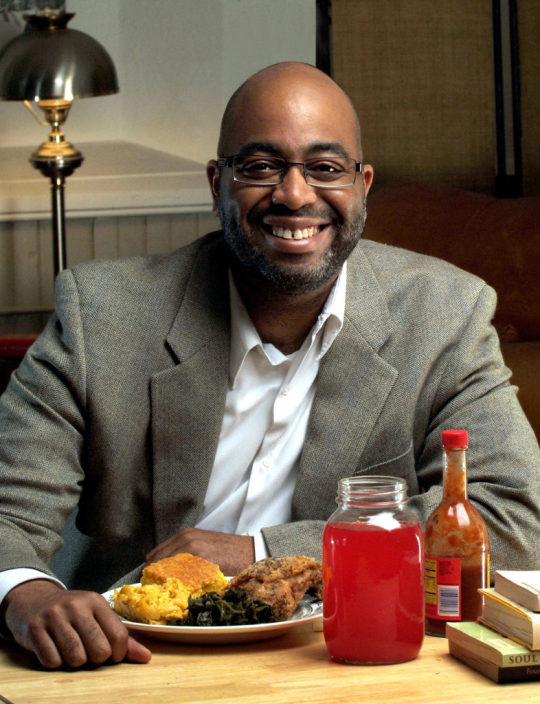
African American food culture is an especially fitting lens with which to explore African American history because, like DNA—which Twitty goes into detail about in his book, it is one of many aspects of African American identity that represents an unbroken line from Africa to present-day America. “There’s so many of our customs, so many of our ways of looking at seasoning and food and everything else, that’s just straight up from Africa,” he says.
One of these customs is the concept of “teranga,” a West African idea of neighborliness and hospitality, which became a defining tenet of Southern gentility.
“These are… values that were taught to White kids raised by Black women,” Twitty says. “[W]e were taught to believe that Southern hospitality was grounded in some sort of, like, medieval pass down. It was this thing that we… inherited from our African side mixed with a little bit of European and Native concepts of hospitality and neighborliness.”

“Within the American South, the difference between soul food and Southern food is so blurred, it’s almost indistinguishable,” he continues. In terms of flavor, “soul food, over time, has tended to be more intense in its seasoning” and plays with sweet and savory more than White Southern variations. Another key difference: soul food remains stigmatized. It is characterized as “slave food,” an unhealthy diet that “should come with a warning label.” In actuality, Miller explains, enslaved Africans ate a largely plant-based diet, with richer sweet and meat dishes savored on special occasions. The stigma is so pervasive that when soul food dishes such as Nashville Chicken go mainstream, African American cooks are not credited.
“We’re now in a phase where restaurants menus will tell you [everything about] what you’re eating, where it was grown or raised, [the animal’s] personal hobbies, whatever,” Miller jokes. “So why can’t they just say, ‘this is an African American specialty’? Just give a shoutout to where you got it from. Just acknowledge the source.”

Twitty’s The Cooking Gene safeguards against cultural appropriation. Rather than writing recipes and techniques—look to Donna Pierce’s website, Black America Cooks—he focuses on food as part of the lived experience of enslaved Africans and as an element of our shared Black American cultural DNA.
“I deliberately said to myself, [White people] will not be able to appropriate these three things: our Africanness, our experience on the plantation, and our blood,” Twitty says. “No one will be able to take these things away from us. I was telling a Black story that cannot be appropriated.”
#How Black Culinary Historians Are Rewriting the History of American Food#Black Cooking#Black culinary history#cooking#Black Foodies#african american food history#Black Culinarians#Black America Cooks#Donna Pierce#Black Cultural DNA
1 note
·
View note
Text
Recipes ??? Not just a secret ...
#american#baking#black#chef#cooking#culinary#culinarytips#facebook#foodies#foodietiktok#history#historytiktok#instagram podcasts#knowledge#recipes#talk#thoughtoftheday#youtube
0 notes
Text


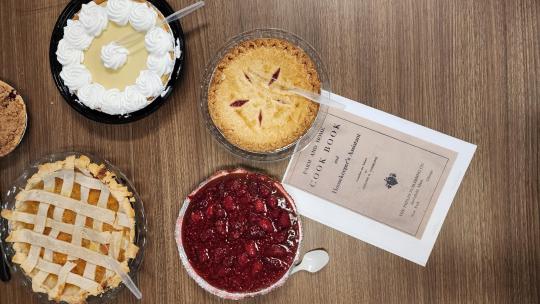

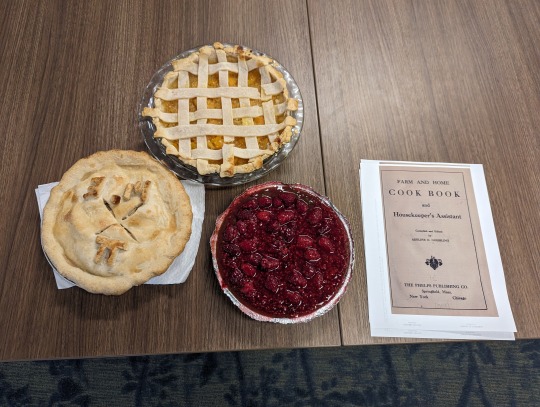

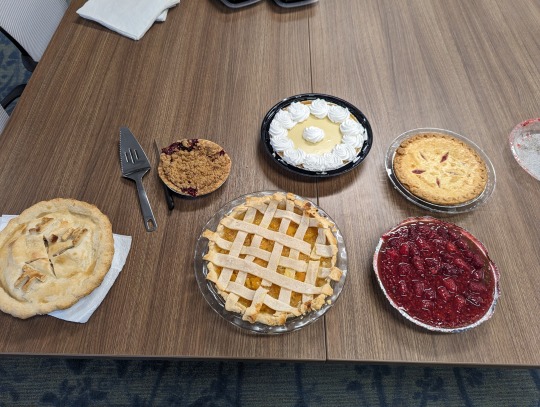
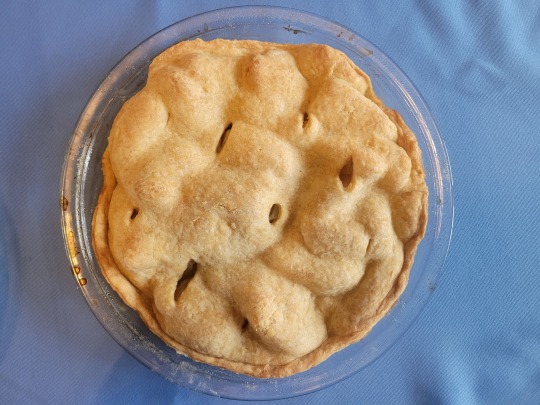
A celebration of #PiDay and #PieDay from the Great Library Bake-off! #GLPBO24!
#libraries#Pie Day#Pi Day#GLPBO24#special collections#libraries and archives#special collections and archives#special collections libraries#american culinary history#culinary history#pies#pie#bake off#pie bake#pie crust#great library pie bake off#gbbo#glpbo 2024
21 notes
·
View notes
Text
More complete list of ways that websites and books about gardening shamelessly misinform and confuse people
Using any combination of cultivar names, species names, genus names, and common names to refer to plants, leaving well-intentioned gardening noobs fighting for their lives in a lawless wasteland. Just look at this Better Homes and Gardens article on salvia.
Salvia is a genus of plants containing hundreds of species, including culinary sage, rosemary, and many species used as ornamentals. The Better Homes and Gardens list ruthlessly mixes common names for sage species with cultivar names, without giving the binomial Latin species name at all for a single one...




...and refers to two totally different plants only as "purple sage" in the same listicle


On that note, acting like "variety" is just as important as, or interchangeable with, "species." Just read an article that said "some varieties of this plant can be invasive, so make sure to check which ones are prohibited in your area!" No. NO. No specific cultivar of an invasive plant species is going to be non-invasive. In fact, introducing new cultivars of an invasive plant will make the invasive species problem WORSE because that's new genetic material. 'Bradford' pears are invasive in the US, 'Cleveland' pears are also invasive, because they're BOTH PYRUS CALLERYANA, but the website you're buying them off of doesn't SAY that, AUGHH
Referring to plants that are enthusiastic or aggressive growers as 'invasive.' I falsely believed so many native species were invasive simply because some dumbass article decided to call them "invasive" for the crime of being able to grow in a lawn. The same websites will turn around and say that a 100% virulent invasive species "can become aggressive in some gardens" WHSFDHHKKK???
Gardening books describing a gorgeous native flower that doesn't die instantly when you think a negative thought about it: "Invasive. Evil. Kill on sight." Gardening books describing one of the worst known invasive plant species in human history that's decimating ecosystems as we speak: "This plant can be a teensy weensy bit vigorous."
totally failing to explore what it means for a cultivar of a plant to be "sterile." Here's the thing. The 'Bradford' pear was supposed to be sterile, but it was not, the cultivar was just made up of clones of the same plant, and most plants can't fertilize themselves. When another cultivar of Pyrus calleryana is planted close to it, such as the 'Cleveland' pear, surprise surprise, THEY AREN'T STERILE.
IIRC it is possible to produce truly sterile cultivars by breeding a plant that can't make seeds/fruits and cloning those plants by vegetative propagation. A cultivar of cloned, genetically identical plants with completely unchanged reproductive ability is NOT STERILE, it is just banking on no other cultivars of the plant ever existing nearby. Which is deeply stupid.
Yes, "cultivars" (the names in single quotation marks next to the name of the plant in a nursery label) are generally just groups of clones of the same founding individual. I'm not a fan of cultivars because they're basically Petri dishes for breeding disease. E.g. The Emerald ash borer was able to so thoroughly decimate ash trees in the USA partly because the gene pool of planted ash trees in American cities was 2-3 individual trees big. Now ornamental boxwoods seem to be dying off en masse in my area, and the reasons are probably similar.
796 notes
·
View notes
Text
Reading list for Afro-Herbalism:
A Healing Grove: African Tree Remedies and Rituals for the Body and Spirit by Stephanie Rose Bird
Affrilachia: Poems by Frank X Walker
African American Medicine in Washington, D.C.: Healing the Capital During the Civil War Era by Heather Butts
African American Midwifery in the South: Dialogues of Birth, Race, and Memory by Gertrude Jacinta Fraser
African American Slave Medicine: Herbal and Non-Herbal Treatments by Herbert Covey
African Ethnobotany in the Americas edited by Robert Voeks and John Rashford
Africanisms in the Gullah Dialect by Lorenzo Dow Turner
Africans and Native Americans: The Language of Race and the Evolution of Red-Black Peoples by Jack Forbes
African Medicine: A Complete Guide to Yoruba Healing Science and African Herbal Remedies by Dr. Tariq M. Sawandi, PhD
Afro-Vegan: Farm-Fresh, African, Caribbean, and Southern Flavors Remixed by Bryant Terry
Barracoon: The Story of the Last “Black Cargo” by Zora Neale Hurston
Big Mama’s Back in the Kitchen by Charlene Johnson
Big Mama’s Old Black Pot by Ethel Dixon
Black Belief: Folk Beliefs of Blacks in America and West Africa by Henry H. Mitchell
Black Diamonds, Vol. 1 No. 1 and Vol. 1 Nos. 2–3 edited by Edward J. Cabbell
Black Faces, White Spaces: Reimagining the Relationship of African Americans to the Great Outdoors by Carolyn Finney
Black Food Geographies: Race, Self-Reliance, and Food Access in Washington, D.C. by Ashanté M. Reese
Black Indian Slave Narratives edited by Patrick Minges
Black Magic: Religion and the African American Conjuring Tradition by Yvonne P. Chireau
Black Nature: Four Centuries of African American Nature Poetry edited by Camille T. Dungy
Blacks in Appalachia edited by William Turner and Edward J. Cabbell
Caribbean Vegan: Meat-Free, Egg-Free, Dairy-Free Authentic Island Cuisine for Every Occasion by Taymer Mason
Dreams of Africa in Alabama: The Slave Ship Clotilda and the Story of the Last Africans Brought to America by Sylviane Diouf
Faith, Health, and Healing in African American Life by Emilie Townes and Stephanie Y. Mitchem
Farming While Black: Soul Fire Farm’s Practical Guide to Liberation on the Land by Leah Penniman
Folk Wisdom and Mother Wit: John Lee – An African American Herbal Healer by John Lee and Arvilla Payne-Jackson
Four Seasons of Mojo: An Herbal Guide to Natural Living by Stephanie Rose Bird
Freedom Farmers: Agricultural Resistance and the Black Freedom Movement by Monica White
Fruits of the Harvest: Recipes to Celebrate Kwanzaa and Other Holidays by Eric Copage
George Washington Carver by Tonya Bolden
George Washington Carver: In His Own Words edited by Gary Kremer
God, Dr. Buzzard, and the Bolito Man: A Saltwater Geechee Talks About Life on Sapelo Island, Georgia by Cornelia Bailey
Gone Home: Race and Roots through Appalachia by Karida Brown
Ethno-Botany of the Black Americans by William Ed Grime
Gullah Cuisine: By Land and by Sea by Charlotte Jenkins and William Baldwin
Gullah Culture in America by Emory Shaw Campbell and Wilbur Cross
Gullah/Geechee: Africa’s Seeds in the Winds of the Diaspora-St. Helena’s Serenity by Queen Quet Marquetta Goodwine
High on the Hog: A Culinary Journey from Africa to America by Jessica Harris and Maya Angelou
Homecoming: The Story of African-American Farmers by Charlene Gilbert
Hoodoo Medicine: Gullah Herbal Remedies by Faith Mitchell
Jambalaya: The Natural Woman’s Book of Personal Charms and Practical Rituals by Luisah Teish
Just Medicine: A Cure for Racial Inequality in American Health Care by Dayna Bowen Matthew
Leaves of Green: A Handbook of Herbal Remedies by Maude E. Scott
Like a Weaving: References and Resources on Black Appalachians by Edward J. Cabbell
Listen to Me Good: The Story of an Alabama Midwife by Margaret Charles Smith and Linda Janet Holmes
Making Gullah: A History of Sapelo Islanders, Race, and the American Imagination by Melissa Cooper
Mandy’s Favorite Louisiana Recipes by Natalie V. Scott
Medical Apartheid: The Dark History of Medical Experimentation on Black Americans from Colonial Times to the Present by Harriet Washington
Mojo Workin’: The Old African American Hoodoo System by Katrina Hazzard-Donald
Motherwit: An Alabama Midwife’s Story by Onnie Lee Logan as told to Katherine Clark
My Bag Was Always Packed: The Life and Times of a Virginia Midwife by Claudine Curry Smith and Mildred Hopkins Baker Roberson
My Face Is Black Is True: Callie House and the Struggle for Ex-Slave Reparations by Mary Frances Berry
My Grandmother's Hands: Racialized Trauma and the Pathway to Mending Our Hearts and Bodies by Resmaa Menakem
On Her Own Ground: The Life and Times of Madam C.J. Walker by A'Lelia Bundles
Papa Jim’s Herbal Magic Workbook by Papa Jim
Places for the Spirit: Traditional African American Gardens by Vaughn Sills (Photographer), Hilton Als (Foreword), Lowry Pei (Introduction)
Post Traumatic Slave Syndrome by Dr. Joy DeGruy
Rooted in the Earth: Reclaiming the African American Environmental Heritage by Diane Glave
Rufus Estes’ Good Things to Eat: The First Cookbook by an African-American Chef by Rufus Estes
Secret Doctors: Ethnomedicine of African Americans by Wonda Fontenot
Sex, Sickness, and Slavery: Illness in the Antebellum South by Marli Weiner with Mayzie Hough
Slavery’s Exiles: The Story of the American Maroons by Sylviane Diouf
Soul Food: The Surprising Story of an American Cuisine, One Plate at a Time by Adrian Miller
Spirituality and the Black Helping Tradition in Social Work by Elmer P. Martin Jr. and Joanne Mitchell Martin
Sticks, Stones, Roots & Bones: Hoodoo, Mojo & Conjuring with Herbs by Stephanie Rose Bird
The African-American Heritage Cookbook: Traditional Recipes and Fond Remembrances from Alabama’s Renowned Tuskegee Institute by Carolyn Quick Tillery
The Black Family Reunion Cookbook (Recipes and Food Memories from the National Council of Negro Women) edited by Libby Clark
The Conjure Woman and Other Conjure Tales by Charles Chesnutt
The Home Place: Memoirs of a Colored Man’s Love Affair with Nature by J. Drew Lanham
The Jemima Code: Two Centuries of African American Cookbooks by Toni Tipton-Martin
The President’s Kitchen Cabinet: The Story of the African Americans Who Have Fed Our First Families, from the Washingtons to the Obamas by Adrian Miller
The Taste of Country Cooking: The 30th Anniversary Edition of a Great Classic Southern Cookbook by Edna Lewis
The Tuskegee Syphilis Study: An Insiders’ Account of the Shocking Medical Experiment Conducted by Government Doctors Against African American Men by Fred D. Gray
Trace: Memory, History, Race, and the American Landscape by Lauret E. Savoy
Vegan Soul Kitchen: Fresh, Healthy, and Creative African-American Cuisine by Bryant Terry
Vibration Cooking: Or, The Travel Notes of a Geechee Girl by Vertamae Smart-Grosvenor
Voodoo and Hoodoo: The Craft as Revealed by Traditional Practitioners by Jim Haskins
When Roots Die: Endangered Traditions on the Sea Islands by Patricia Jones-Jackson
Working Conjure: A Guide to Hoodoo Folk Magic by Hoodoo Sen Moise
Working the Roots: Over 400 Years of Traditional African American Healing by Michelle Lee
Wurkn Dem Rootz: Ancestral Hoodoo by Medicine Man
Zora Neale Hurston: Folklore, Memoirs, and Other Writings: Mules and Men, Tell My Horse, Dust Tracks on a Road, Selected Articles by Zora Neale Hurston
The Ways of Herbalism in the African World with Olatokunboh Obasi MSc, RH (webinar via The American Herbalists Guild)
1K notes
·
View notes
Text
A Culinary Journey Through Presidential History 🥪🍰🍽
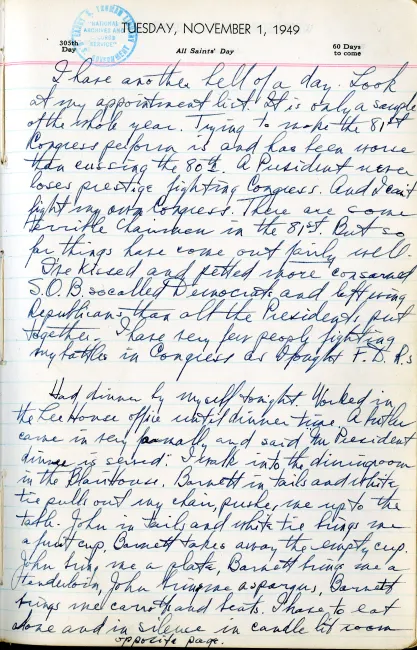
Delving into the culinary history of the White House is a fascinating exploration of taste and tradition. This article embarks on a delicious journey through time, highlighting five remarkable recipes from the kitchens of past U.S. Presidents and First Ladies. These recipes not only offer a taste of history but also reflect the diverse palates and influences that have graced the Presidential table.
Bess Truman's Bing Cherry Mold
Bess Truman, known for her skill and style in the kitchen, contributed a variety of recipes that satisfied many. Among these, the Bing Cherry Mold stands out. This dessert, a perfect blend of sweetness and texture, reflects the simplicity and elegance of the Truman era. Truman had specific dietary preferences, famously disliking onions, and maintaining a healthy diet, but this dessert was a family favorite, indicating a balance between health and indulgence.
Rosalynn Carter's Plains Cheese Ring
Rosalynn Carter's Plains Cheese Ring is a savory delight that hails from the Southern culinary tradition. This cheese appetizer, named after the Carter's hometown in Georgia, is a testament to Rosalynn's commitment to bringing a touch of home to the White House. Its rich, creamy texture paired with the tang of sharp cheddar and the sweetness of strawberry preserves, offers a unique and memorable flavor experience.
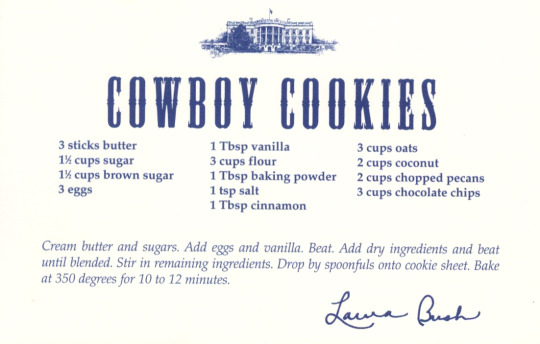
Laura Bush's Cowboy Cookies
First Lady Laura Bush’s Cowboy Cookies are a testament to her Texas roots. These chunky, flavorful cookies, packed with oats, nuts, coconut, and chocolate chips, offer a hearty taste of the American Southwest. They were notably a part of her husband's Presidential campaign, symbolizing warmth and hospitality.
Dwight D. Eisenhower's Apple Pie

President Eisenhower was not only a leader but also an enthusiastic cook, particularly known for his apple pie. His version of this classic American dessert is said to be a delightful mix of sweetness and spice encased in a perfectly flaky crust. This pie represents Eisenhower's love for simple, home-cooked meals, a contrast to his high-profile public life.
Gerald Ford's Red Flannel Hash
Gerald Ford's Red Flannel Hash is a colorful, comforting dish that combines cooked beets, potatoes, and corned beef. This dish, with its vibrant red hue and hearty ingredients, is a nod to Ford's Midwestern roots and a symbol of the simple, wholesome American fare.
www.fordlibrarymuseum.gov/library/document/0126/1489765.pdf
Exploring these recipes is not just about the flavors and ingredients; it's a journey through the different eras of American history, each dish telling a story of the time and the people in the White House. From the elegance of Bess Truman's desserts to the rustic charm of Laura Bush's Cowboy Cookies, these recipes offer a delectable glimpse into the nation's past, one plate at a time.
Read more:
167 notes
·
View notes
Text
Freeze Time - Alex Claremont-Diaz x Male Reader

Summary: Late night noodles leads to blowjobs
Words: 2.7k
Warnings: blowjobs; gay; semi-smut; fluff
Notes: I have no idea how noodles led to a blowjob but enjoy
Y/N’s POV
The White House is a far cry from the familiarity and grandeur of Kensington Palace. As I walk in, I’m immediately struck by its simplicity and functionality. The walls are painted a clean, crisp white, and the countertops gleam under the bright overhead lights. The stainless steel appliances stand in stark contrast to the ornate furnishings I’m accustom to at home. The kitchen is spacious, with enough room for a team of chefs to prepare meals for the First Family and their guests. It’s well-organised space, with pots and pans neatly hung on the walls, and a long island in the centre where ingredients are laid out for easy access. It feels more like a professional culinary workspace than a royal palace kitchen.
I pull out a stool and take a seat at the island, the cool surface beneath my hands a stark reminder that I’m far from the comforts of Kensington. The White House kitchen is an oasis of tranquility compared to the perpetual hustle and bustle of Kensington Palace. Here, in the heart of American power, the quietude is striking. The silence is almost reverent, as if the walls themselves are whispering tales of history and diplomacy.
Gone are the echoes of footfalls and the distant hum of activity that I’ve grown so accustomed to the corridors of Kensington. In this austere American kitchen, the only sounds that break the silence are the gentle clinking of utensils and the soft sizzle of something cooking on the stove. One lonely cook stays behind, making me some noodles with a soft smile on her face as if she loves her job more than anything else. It’s a stark contrast to the constant movement and chatter that fills the air at home.
One lonely cook stays behind, her presence a reassuring island in the sea of quietude. She moves with a graceful efficiency, her every action precise and deliberate. Her eyes meet mine, and there's a warmth in her gaze, as if she finds solace in her solitary late-night task. It's as though she loves her job more than anything else, and in that moment, I can't help but admire her dedication.
With a soft smile, she places a steaming bowl of chicken ramen in front of me. The aroma is intoxicating, the rich scent of broth mingling with the savoury notes of chicken and herbs. The steam curls upwards, wrapping around me like a comforting embrace, dispelling the chill that had settled in my bones.
I thank her, and she nods before retreating, her footsteps fading into the background as she leaves me alone with the bowl of ramen. As I take the first bite, the flavours explode in my mouth, each ingredient perfectly balanced. The noodles are tender but still have a satisfying bite, and the brother is a symphony of umami, with hints of soy sauce and ginger. It’s a taste of comfort, a reminder of being home and having late night meals with Henry and Bea, and I savour it with every spoonful.
Just as I’m lost in the delicious embrace of the ramen, I hear the soft sound of footsteps approaching. I turn to see Alex, my heart quickening at the sight of him. His disheveled hair and causal attire are a stark contrast to the polished image he presents to the world. In this quiet, intimate moment, he’s just Alex.
He smiles as he approaches, his eyes lighting up when he sees the ramen in front of me, ‘Late night noodles, huh?”
As Alex takes a seat beside me, our shoulders brushing against each other, a warm and tingling sensation spreads through me. It’s as if the simple act of siting next to each other has the poser to chase away any lingering shadows of loneliness or uncertainty. In this moment, the world outside the White House kitchen fades into insignificance, and it’s just the two of us. I watch him with a fondness that never seems to wane, even after all this time. His disheveled hair, slightly tousled from the busy day, only adds to his charm. Gone is the meticulously styles appearance he wears for public events, replaced by a more relaxed and authentic version of Alex.
He shoots me a mischievous grin as he reaches for a fork and playfully swipes a mouthful of my ramen. His russet eyes meet mine, and there’s a spark of playful flirtation in them, a reminder of the chemistry that has always crackles between us, “Late night noodles are elite.”
His presence is magnetic, drawing me closer despite the narrow divide between us. I catch a whiff of his familiar scent, a combination of his cologne and the subtle traces of the day’s activities. It’s a scent that’s uniquely his, comforting and inviting.
As our knees touch under the table, he leans in closer, his lips dangerously close to my ear, “You know, Y/N.” He murmurs, his voice a velvety whisper that sends shivers down my spine, hand large hand falling to my thigh and sending a jolt through me, “I’ve always thought you look especially irresistible when you're enjoying a good bowl of ramen.”
As my cheeks burn with the heat of Alex’s bold statement, his large, warm hand finds its way to my thigh, sending an electrifying jolt through my body. The intimacy of the touch sends my heart racing, and I can’t help but respond to the magnetic pull between us. I turn to him, my breath hitching as I lock eyes with him again. The velvety timbre of his voice still lingers in my ears, and the unspoken desire smoulders in the air. There’s a raw and undeniable chemistry that has always existed between us, and in this moment, it’s impossible to resist.
With shared intent, we finish the last bites of the ramen, the flavours a backdrop to the escalating tension between us. As the empty bowl is set aside, Alex’s lips find their way to my neck, leaving soft, tentative kisses in their wake. My skin tingles with each gentle press of his lips, and I can feel his warm breath against my sensitive flesh.
My fingers find their way into his hair, entwining in the soft strands. With a desperate urgently, I yank him closer, my lips seeking his in a kiss that’s fierce and unrelenting. Our mouths crash together, a tumultuous storm of longing and desire. The taste of ramen lingers on our lips as we devour each other, the tension that had simmered between us now ignited into a passionate blaze. His tongue brushes against my bottom lip, seeking entrance, and I part my lips eagerly, granting him access. The sensation of his tongue mingling with mine sends a shiver down my spine, and I respond in kind, our mouths locked in a passionate dance that knows no restraint.
But the, as if overcome by a sudden burst of desire and urgency, Alex pulls away, his eyes dark and smouldering. He murmurs huskily, his voice laced with longing, “We should take this to the bedroom.”
His words send a jolt of anticipation through me, and before I can even respond, he grabs my hand with an eagerness that matches my own. Without hesitation, we sprint down the quiet halls of the White House, our footsteps echoing almost too loud in the stillness of the night. Up the stairs we go, each step bringing us closer and closer to his room. The thrill of our urgency intensifies with each step up the grand staircase, my heart racing in tandem with our hurried ascent. The quiet elegance of the White House feels worlds away as we sprint through its hallowed halls, driven by an irresistible need for each other.
As we reach his bedroom door, Alex doesn’t waste a moment. With a fiery passion that mirrors my own, he shoves me gently against the wall, his lips crashing onto mine in a searing kiss that leaves me breathless and dizzy. It’s a kiss that tastes of desire, need, and the years of longing we’ve shared. Our lips move fervently against each other's, a symphony of heat and hunger, and in this stolen moment, I can't help but marvel at the intensity of our connection
With a deft hand, Alex fumbles for the doorknob, his urgency clear as he pushes it open and ushers me inside the bedroom. The soft lamplight casts a warm glow, revealing a room that is very much Alex. Before I can really take in the room Alex’s lips claim mine and he’s guiding me backwards until my thighs hit his bed, and we tumble down together in a tangle of limbs.
Giggle and gasps escape our lips as we fall onto the soft mattress, the weight of Alex landing on top of me. The bed dips beneath us, and we’re a mess of arms and legs, tangled together in our fervour. The laughter that bubbles up between kisses is infectious, a testament to the joy the fills our hearts in these stolen moments of intimacy. Alex’s hands start their slow descent. With a deliberate slowness that heightens the anticipation, his fingers deftly unbutton my shirt, one button at a time, each revealing a bit more of my skin beneath.
His lips, still flushed with desire and tasting of the sweet promise of our connection, following the path his hands take. They leave a trail of delicate kisses along my chest, the warmth of his mouth igniting a fire within me. It’s as if each kiss is a silent declaration of his love and longing, a testament to the tenderness we share.
With a final, lingering kiss at my navel, Alex’s attention shifts lower. His fingers dance skilfully over the button of my jeans, and he slowly, tantalisingly, eases them open. The fabric gives way, revealing the growing desire that has been building beneath. It draws a gasp from me when he traces a line of hot, moist kisses along the exposed skin of my hips, his breath coming in soft pants against my flesh. I raise my hips slightly to aid n their removal, allowing him to slide them down my legs and cast them aside, leaving me in just my boxers before him.
With a gaze that’s both intense and loving, Alex takes in the sight before him. His russet eyes are almost black as they slide over my body as if I was carved by gods, settling on the bulge in my boxers that is nowhere near going away, especially when he looks at me like that, his hunger palpable. But he doesn’t rush. Instead, he savours the moment, the intimacy.
His lips, warm and moist, continue their journey upward, tracing a path of kisses up my inner thighs. Each touch is a delicate caress, a testament to the desire that courses through our veins. The sensation of his breath against my flesh sends a thrill of excitement through me, and I arch my back, offering myself to him without reservation. That’s all it takes for him to practically rip my boxers down my legs and throwing them aside. I raise myself to my elbows to watch him, watching the way his face as he stares my throbbing erection, pressed against my stomach. Lust glimmers in his eyes, the intensity of his desire reflected in their depth. His love for me is evident in the tenderness of his touch, and there’s an unspoken promise that goes beyond physical.
But I also see something else in his eyes, a hint of fear and nervousness that tugs at my heart. It’s as if he’s baring not just his body but his soul, and the vulnerability of the moment weighs heavily on him. He takes a deep breath, his chest rising and falling with the rhythm of his anticipation, eyes flickering up to meet mine.
“You don’t have-“ I can’t even finish the sentence, my breath gets stuck in my throat as he licks a bold stripe up the underside of my dick. His large hands are gripping my hips, rubbing soothing circles into the skin before he kisses the head and I think I die a little. My hands find comfort in his hair, tangling in those dark locks as he goes at his own pace, lips feeling heavenly. He closes his lips around the head, dragging his tongue excessively over the tip, where pre-cum has been dribbling across my lower stomach, drawing an embarrassing sound from my throat. He doesn’t move, just keeps his lips there and I want to push him down but this is… I don’t want to rush Alex.
“A-Alex please,” I’m whining and the fucker pulls his lips away, looking up at me through those pretty eyelashes, lips parted in a teasing grin, “Stop teasing me.” I’m growling out, gripping his hair almost painfully tight and his eyes flutter for a moment as a sound rumbles in his chest. He meets my gaze and lets his mouth drop open, eyes daring me to do my worst and I think I may have just come then and there. I pull him down the same time I raise my hips, head flying back against the pillows when his throat constricts around me and he lets out a choked sound.
That’s all he needs to take control, hands finding my hips and gripping hard enough to promise bruises in the morning as he finds a steady rhythm and I loosen my grip on his hair, letting him set the pace. That pit in my stomach starting to tighten and my hips jerk as much as his hands allow, his tongue doing dirty dirty things, making my thighs tighten around his shoulders.
“A-Alex-“ I tug on his hair in warning and instead of pulling off he loosens his throat and fuck, that’s all it takes. I’m spurting white hot ropes down his throat, his name dying in my throat as my hips jerk and my thighs shake. He stays there, mouth open, lips flush and looking up at me with the most innocent eyes as if he isn’t currently blowing one of the Princes of England.
I finally let his hair go, letting him pull away and expecting him to go spit in the toilet but instead he’s swallowing and licking his lips, a knowing grin on his face.
“We should have done that much sooner.” He’s murmuring, chest heaving a little and all I can do is stare at him, brain fogged with everything Alex. The way he’s leaning over me, fingers brushing over my cheek gently and a look in his eyes that I always want to see. It's not quite love in its full bloom, but it's on its way there, and I want nothing more than to stay in this moment forever.
“Can we just freeze time?” I whispers he words escaping before I can even think, fingers playing with the soft tufts of hair at the base of his scalp.
Alex’s smile in response is like a ray of sunshine breaking through the clouds. It’s a smile that makes my heart swell with warmth and happiness, a smile that reassures me that we’re exactly where we’re meant to be. And then, without a word, his lips find mine in a kiss that speaks of everything we are and everything we’re becoming, a kiss that leaves me breathless and yearning for more.
Tears spring to my eyes as our lips part, the intensity of the kiss leaving me emotionally overwhelmed. Alex, ever attuned to my feelings, brushes one the tears away with his thumb, his touch gentle and reassuring. His voice is a soft murmur against my ear as he whispers, “Sure, we can freeze time for a while.”
It’s a promise and it soothes the storm of emotions raging within me. With a tenderness that speaks of his devotion to me, he shifts to lays beside me, our bodies pressed close. His forehead meets my cheek, a gesture of affection that feels like a warm embrace and he’s pulling the duvet over us, “We’ll freeze time for as long as you like.”
┈ ✁✃✁✃✁✃✁✃✁ ┈
Red White and Royal Blue Masterlist
New Tag List Form
TAGS: @clarks-letterman
#alex claremont diaz x you#alex claremont diaz x reader#alex claremont diaz#red white and royal blue x you#red white and royal blue x male reader#red white and royal blue#rwrb#rwrb x male reader#Alex Claremont Diaz x male reader#Alex Claremont -diaz fluff#Alex Claremont-diaz smut#Alex Claremont Diaz angst#red white and royal blue smut#red white and royal blue fluff#red white and royal blue angst#taylor zakhar perez
277 notes
·
View notes
Text
By the time I met Broccoli, his battle with the Friends had already lasted longer than the Revolutionary War. “I’m gonna go after them with a vengeance,” Broccoli told me from his basement in Pelham Manor. He apologized for how long it was taking, two hours and counting, to talk through what he believed to be the “many tentacles” of the vast conspiracy against him, not to mention his entire family history. The genealogical tree, he told me, includes the Broccolis of Calabria, who, as Domenic tells the tale, crossed cauliflower with rabe and named a vegetable after themselves — not true, according to broccoli experts — and the Broccolis that control the James Bond franchise. (Despite having never met them, he has a copy of the New York Times obituary for one of the Bond Broccolis on his office wall next to a photo of his graduation from the Culinary Institute of America.) Broccoli was only beginning to explain where he fit in when his wife called from upstairs to say that dinner was starting in five minutes and he’d better be there.
Please read the most beautifully concise and insane distillation of the illness called Being An American that is somehow not an overwritten lit mag short story but real life. A Bronx small business tyrant who owns four IHOP locations. Revolutionary War Reenactors. Accusations of reverse-grave robbing (planting bones). The Federal Bureau of Investigation. Lies. Deceit. Betrayal. Powdered wigs. Themed dining experiences. If its not being optioned in Hollywood this very second I'll my phone
209 notes
·
View notes
Text
🌿 Herb Of The Day
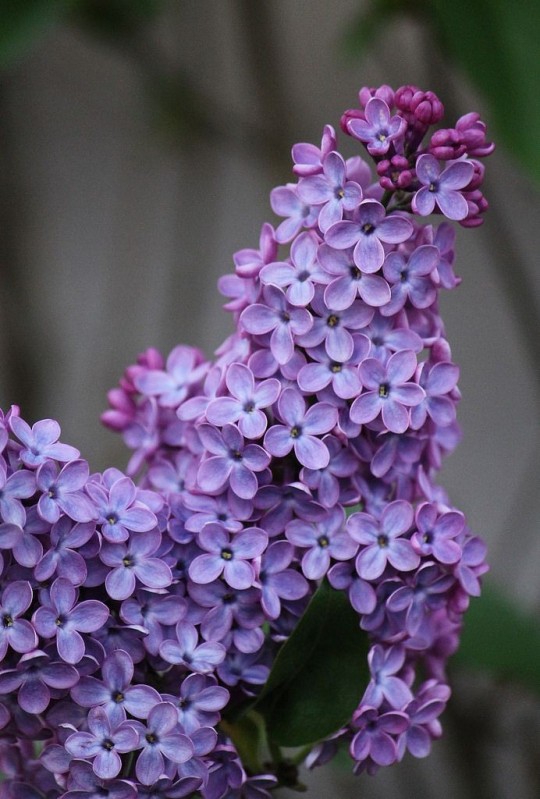
Title: Lilac
Gender: Feminine
Element: Water
Planet: Venus
📜 Folklore & History 📜
Lilacs are an old, old, species that originated in Persia and then traveled to Europe. They were brought to America in 1750 and then planted at New Jersey Governor Wentworth’s home. Other prominent men fell in love with lilacs. They were reportedly one of Thomas Jefferson’s favorite flowers, and he documented his lilac-planting-methods in 1767. George Washington followed suit and moved existing lilacs on his property to his garden in 1785.
In Greek mythology, Pan, the god of the wild, chased a nymph named Syringa. She turned herself into a lilac bush to escape Pan, and in anger, he broke off the reed-like branches which made pipes. With regret, he tried kissing the broken branches, and as his air pushed over them, sounds were made. Lilacs were responsible for the creation of “Panpipes.”
Russian folklore believed that hanging lilacs above a baby’s bed would bring the child wisdom.
American folklore thought that lilacs could drive away evil and that placing them in a haunted house would displace ghosts. Thought to be symbolic of “old love,” Victorian widows often wore lilacs as a sign of remembrance. One hundred and fifty-five years ago today, April 15th, Abraham Lincoln died after being shot by John Wilkes Booth. Any American — and much of the world — knows the story of the self-educated, country lawyer who became one of our nation’s most beloved presidents. But what many Americans might not realize is how the death of Lincoln reverberated into so many areas of our collective psyche, including literature and horticulture, thanks to Walt Whitman. Walt Whitman was a reporter, printer, writer, traveler and Civil War nurse who is considered one of America’s greatest poets. He self-published Leaves of Grass and worked on it throughout his lifetime, eventually modifying it so that there are eight different editions. Whitman felt a great affinity with President Abraham Lincoln, and when Lincoln was assassinated in the spring of 1865, Whitman grieved.
He wrote years later in Specimen Days about learning of the President’s death:
"I remember where I was stopping at the time, the season being advanced, there were many lilacs in full bloom. By one of those caprices that enter and give tinge to events without being at all a part of them, I find myself always reminded of great tragedy of that day by the sight and odor of these blossoms. It never fails."
While lilacs are first to bloom, their flowers are short-lived. The heady fragrance lingers sweetly at first, but then the blooms start to die, leaving a heavy, cloying smell. One of the first flowers of spring, lilacs contain a natural compound called indole that’s found in flowers — and feces. It’s that undercurrent of the “bottom note” of fragrance that suggests decay and death.
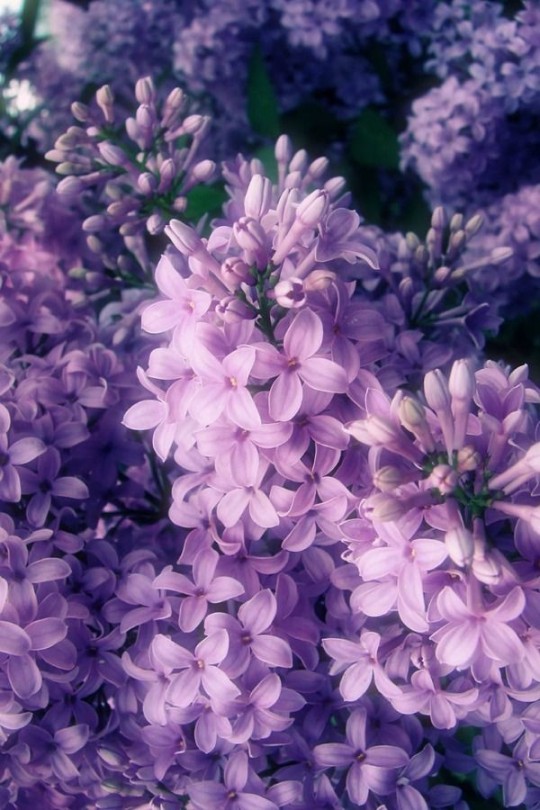
🔮 Metaphysical Properties 🔮
The beautiful May-blooming lilac is one of the loveliest tokens of spring. But they are much more than beautiful shrubs with showy, sweet-smelling flowers. Originally lilacs were planted to repel all evil. Planted near the entryway, lilacs were believed to send out protective vibrations. When the flowers are cut and brought into the home they cleanse any living space. And they'll also remove any unwanted spiritual presence. Blue and white varieties work well for this purpose. Since lilacs are ruled by Venus, they are also used in love spells. Try placing some pink lilacs on your altar while performing a love spell. The dried flowers make a powerful addition to any love sachet.

🍴⚕️ Culinary & Medicinal Properties
The simplest way to enjoy lilacs is as an infusion of the flowers for a lilac sugar. The sugar can then be used in recipes to add lilac flavor to baked goods. This also works with a lilac simple syrup which is just a liquid form of the same thing that’s perfect for making cocktails. For my money though, I think lilac infused honey sounds the best. The sweet floral flavor of lilacs translates beautifully into an ice cream base.
To prevent the recurrence of disease, lilac flowers were used to help strengthen the system and prevent relapse after a patient had healed. They’re said to be specifically good after cases of malaria. Tasting the raw flowers you can actually pick up some of the astringent qualities, as they make your mouth dry and pucker a bit (along with their floral flavors). This astringent quality makes them good for use in skin care products. Lilacs are used as a folk remedy for intestinal worms, as well as a treatment for gastric discomfort and gas. Regardless of the purpose, the most likely medicinal lilac preparation is a tincture, which is just a lilac infused alcohol
#elder witch#baby witch#beginner witch#dark witchcraft#herbalism#herbology#herbs#whimsigoth#witch aesthetic#witch herbs#divination#spirituality#spiritual#witchblr#witchcore#witchcraft#witch tip
470 notes
·
View notes